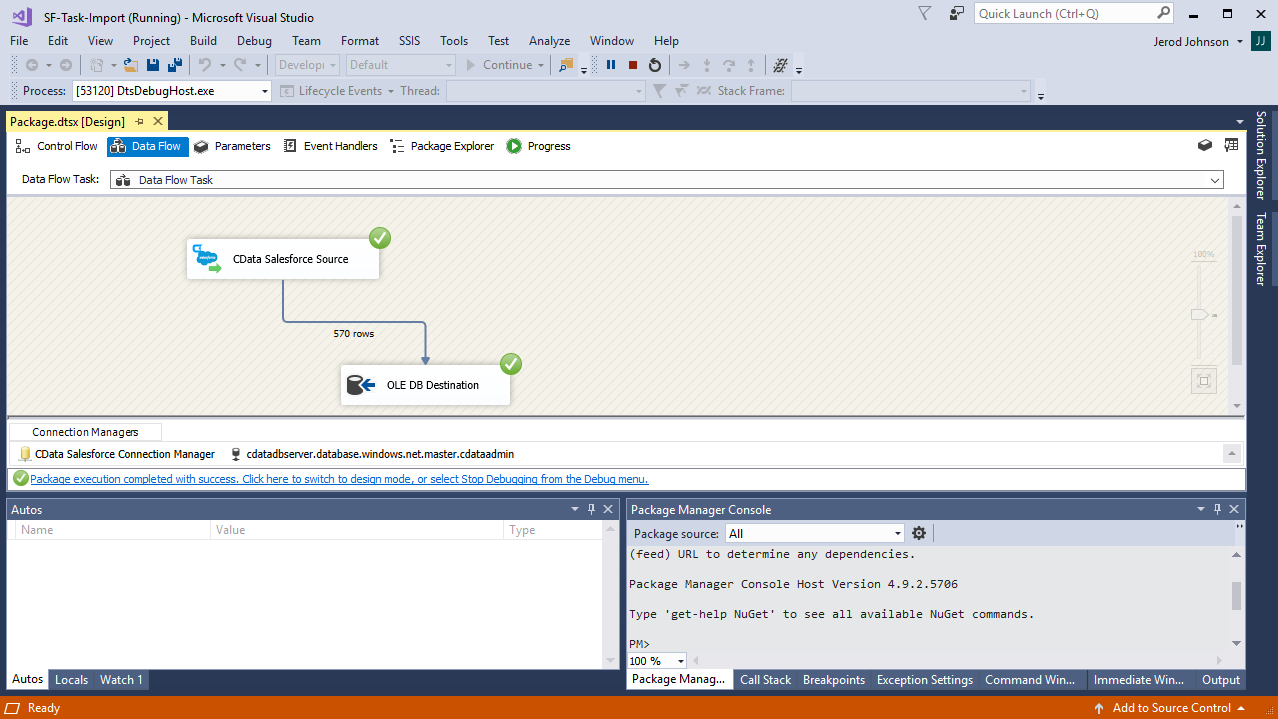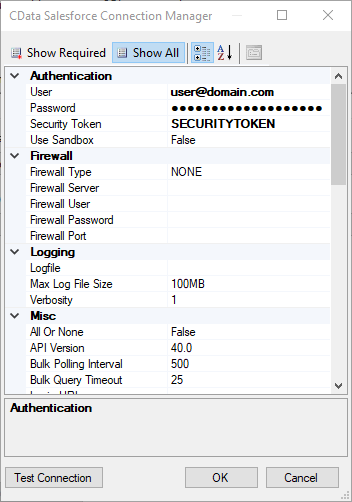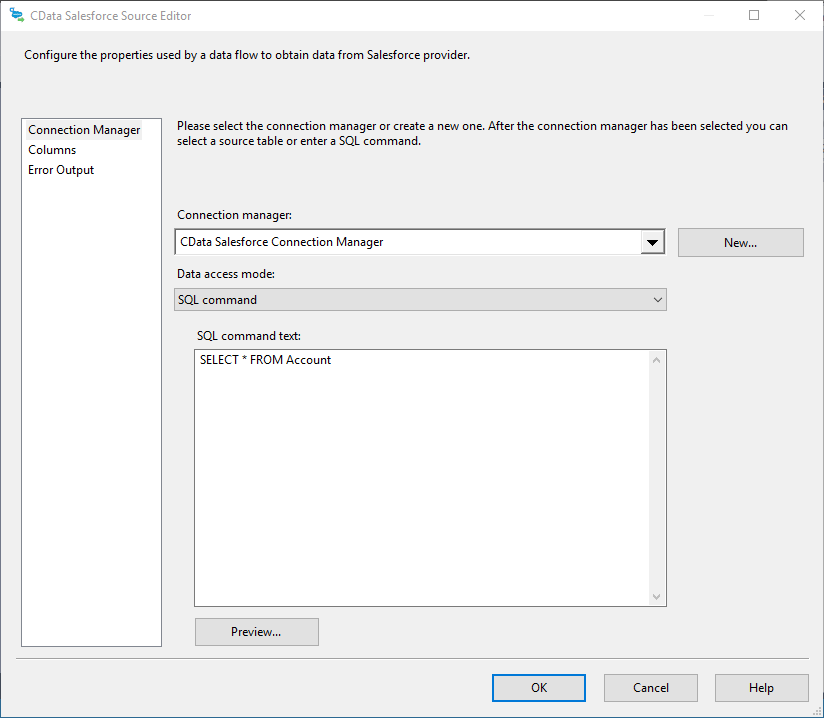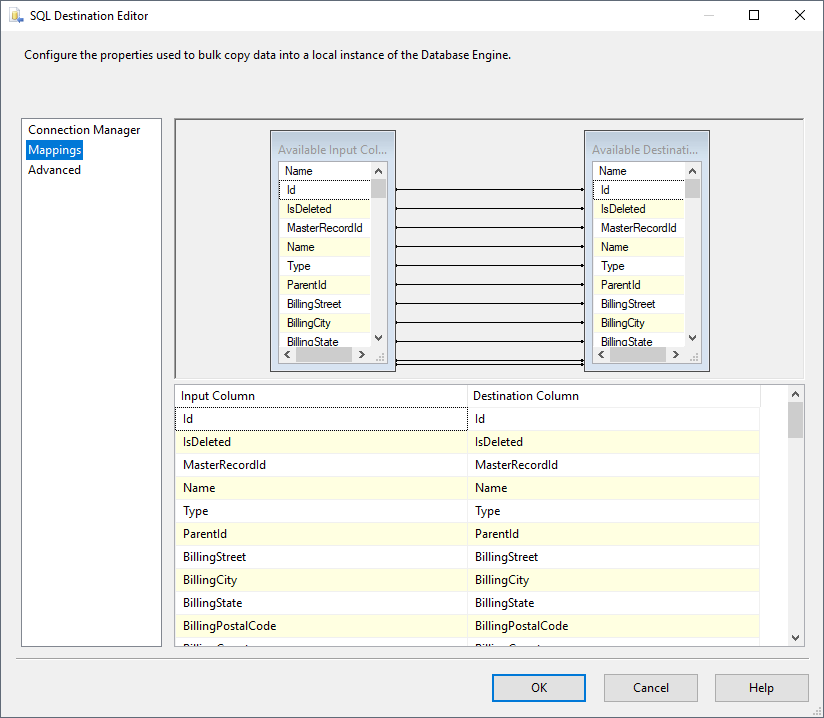Discover how a bimodal integration strategy can address the major data management challenges facing your organization today.
Get the Report →How to Import Jira Service Management Data into SQL Server using SSIS
Easily back up Jira Service Management data to SQL Server using the SSIS components for Jira Service Management.
Using SQL Server as a backup for critical business data provides an essential safety net against loss. Backing up data to SQL Server enables business users to more easily connect that data with features like reporting, analytics, and more.
This example demonstrates how to use the CData SSIS Tasks for Jira Service Management inside of a SQL Server SSIS workflow to transfer Jira Service Management data into a Microsoft SQL Server database.
Add the Components
To get started, add a new Jira Service Management source and SQL Server ADO.NET destination to a new data flow task.
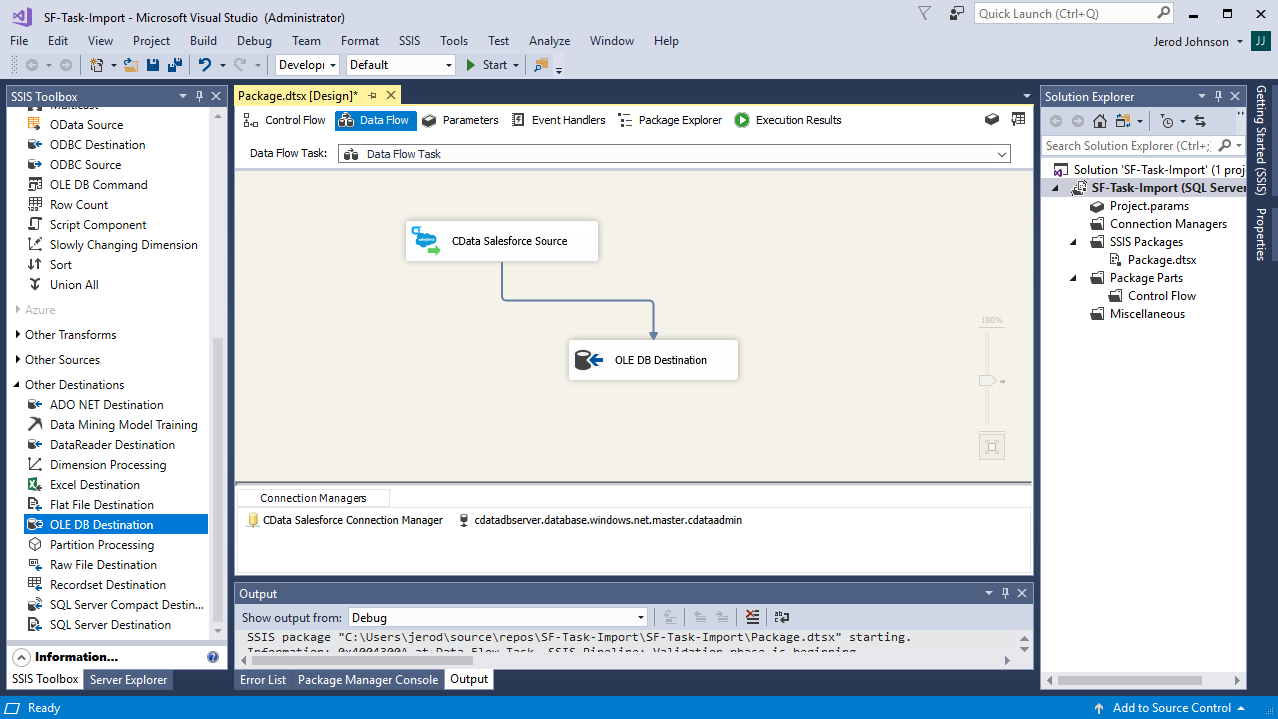
Create a New Connection Manager
Follow the steps below to save Jira Service Management connection properties in a connection manager.
- In the Connection Manager window, right-click and then click New Connection. The Add SSIS Connection Manager dialog is displayed.
- In the Connection Manager type menu, select JiraServiceDesk. The CData Jira Service Management Connection Manager is displayed.
- Configure connection properties.
You can establish a connection to any Jira Service Desk Cloud account or Server instance.
Connecting with a Cloud Account
To connect to a Cloud account, you'll first need to retrieve an APIToken. To generate one, log in to your Atlassian account and navigate to API tokens > Create API token. The generated token will be displayed.
Supply the following to connect to data:
- User: Set this to the username of the authenticating user.
- APIToken: Set this to the API token found previously.
Connecting with a Service Account
To authenticate with a service account, you will need to supply the following connection properties:
- User: Set this to the username of the authenticating user.
- Password: Set this to the password of the authenticating user.
- URL: Set this to the URL associated with your JIRA Service Desk endpoint. For example, https://yoursitename.atlassian.net.
Note: Password has been deprecated for connecting to a Cloud Account and is now used only to connect to a Server Instance.
Accessing Custom Fields
By default, the connector only surfaces system fields. To access the custom fields for Issues, set IncludeCustomFields.
![Configuring a connection (Salesforce is shown).]()
Configure the Jira Service Management Source
Follow the steps below to specify the query to be used to extract Jira Service Management data.
- Double-click the Jira Service Management source to open the source component editor.
- In the Connection Manager menu, select the connection manager previously created.
- Specify the query to use for the data extraction. For example:
SELECT RequestId, ReporterName FROM Requests WHERE CurrentStatus = 'Open'![The SQL query to retrieve records. (Salesforce is shown.)]()
- Close the Jira Service Management Source control and connect it to the ADO.NET Destination.
Configure the SQL Server Destination
Follow the steps below to specify the SQL server table to load the Jira Service Management data into.
- Open the ADO.NET Destination and add a New Connection. Enter your server and database information here.
- In the Data access mode menu, select "table or view".
- In the Table Or View menu, select the table or view to populate.
- Configure any properties you wish to on the Mappings screen.
![The mappings from the SSIS source component to SQL Server. (Salesforce is shown.)]()
Run the Project
You can now run the project. After the SSIS Task has finished executing, your database will be populated with Jira Service Management data.
